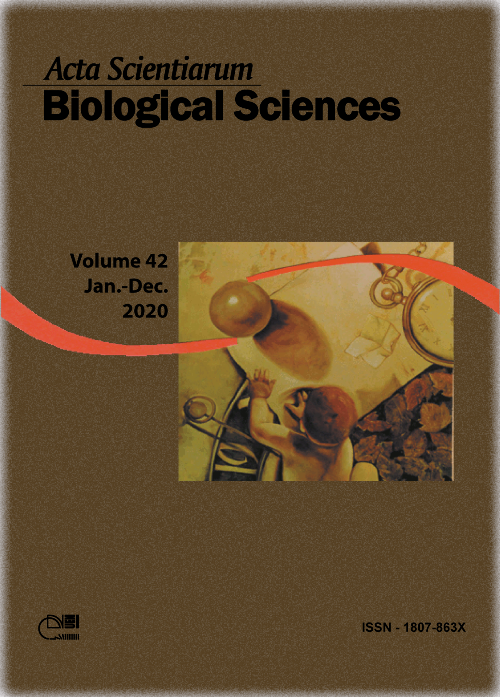Seed vigor of Piptadenia moniliformis Benth. subjected to thermal stress
Accelerated aging: vigor teste
Abstract
The objective of this work is to evaluate the influence of accelerated aging test at 41ºC on the germination and seed vigor of Piptadenia moniliformis Benth. Two experiments were conducted. Experiment 1: seeds were submitted to dormancy overcoming treatments. They were immersed into sulfuric acid for 0 (intact seeds), 5, 10, 15, 20 and 25 minutes. Experiment 2: two methods were evaluated for the accelerated aging test at 41ºC, that is, the traditional method and the saturated NaCl solution method with exposure periods of 0, 24, 48, 72 and 96 hours. After each treatment, the seeds were subjected to electrical conductivity and germination tests. Seeds overcame their dormancy when immersed into concentrated sulfuric acid for 5, 10, 15, 20 or 25 minutes, but the germination was faster when immersed for 20 minutes. The different methods for the accelerated aging test, decreased the germination potential and seed vigor of P. moniliformis after 24 hours of exposure. Regarding the method used, the saturated solution provided, in general, the best results since the seed water content was lower, thus reducing the proliferation of fungi. The electrical conductivity test showed that, by increasing the aging period regardless of the method, there is an increase in seed deterioration, corroborating with germination results, which showed that the correlation was moderate and negative and indicated that the higher the conductivity, the lower the percentage and the germination speed index. The immersion of seeds of P. moniliformis into concentrated sulfuric acid for 20 minutes provides a fast and increased germination. The methods for accelerated aging at 41ºC, traditional and saturated solution, can be used as vigor tests to evaluate the physiological quality of seeds.
Downloads
DECLARATION OF ORIGINALITY AND COPYRIGHTS
I Declare that current article is original and has not been submitted for publication, in part or in whole, to any other national or international journal.
The copyrights belong exclusively to the authors. Published content is licensed under Creative Commons Attribution 4.0 (CC BY 4.0) guidelines, which allows sharing (copy and distribution of the material in any medium or format) and adaptation (remix, transform, and build upon the material) for any purpose, even commercially, under the terms of attribution.
Read this link for further information on how to use CC BY 4.0 properly.












1.png)




3.png)













